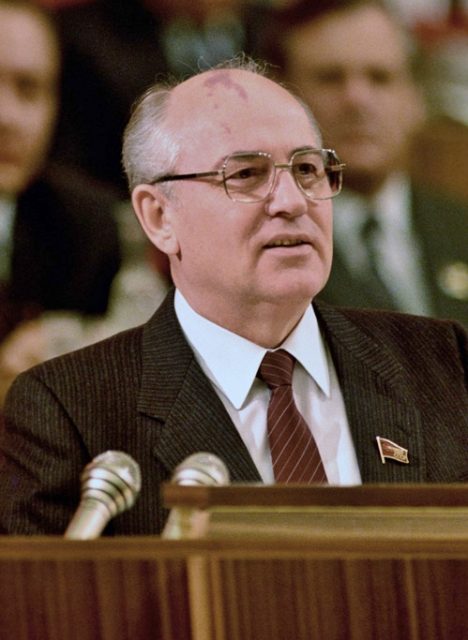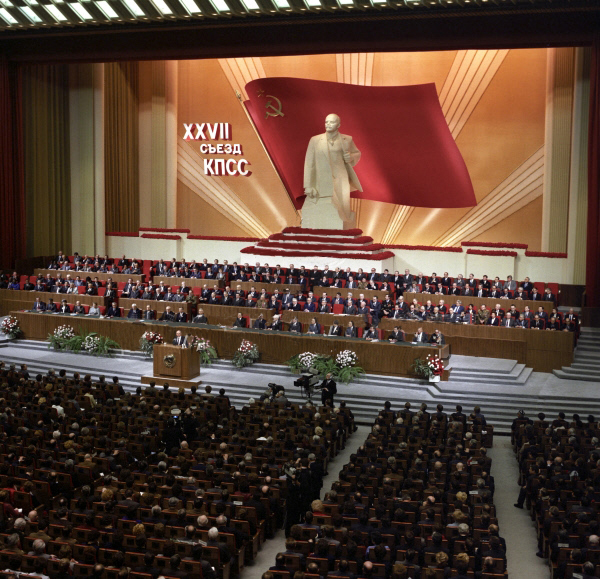Why the Soviet Union could not be reformed
During the second half of the 80s, when no one knew those years would become the Soviet Union’s last, Mikhail Gorbachev attempted some economic reforms without much success. Less than one decade earlier, in 1978, Deng Xiaoping started a series of reforms that secured not only economic growth, but also the rule of Chinese communist party for the next decades. Why the difference?
Sergei Guriev (2019) 1 discusses this question in his review of Chris Miller’s book (Miller, 2016) 2. Here I summarize his view using of his own words most of the time. First, he describes Miller’s account of the story. According to him, Gorbachev understood what Deng was doing, and also understood that the Soviet system was not working. But he failed to reform it because he was not able to overcome powerful antireform interest groups. In order to succeed, he should have reformed the political system faster and more decisively.

By 1961, the year Khrushchev promised that communism would be a reality by 1980, Soviet leaders, and many people around the world, were optimistic about the Soviet economic performance. However, the gap with the West did not close, and the economy stagnated in the 70s. All limited experimentation with markets in that period was declared a failure. Miller documents how Gorbachev and his economic advisors knew first-hand about the Chinese reforms and, then, describes the composition and incentives of the three main interest groups: the defense industry, agriculture and energy companies. He argues that each of these groups was very powerful: given the lack of openness and competition, each of these groups was actually a combination of monopolies, their suppliers and customers who greatly depended on their success, and their representatives in the top political cadres. Falling oil prices, reduced tax revenues due to the antialcohol campaign, and attempts to maintain living standards resulted in huge deficits and prompted the final crisis. All in all, Miller’s account shows that both oil price shocks and the impact of the antialcohol campaign were not the major drivers of the fiscal crisis. The main factors were lack of resolve in tackling the interest groups and in maintaining fiscal discipline, as well as incompetence in basic economics.
Guriev explores a different view. First, he points out that, although very illustrative, Miller’s book lacks the quantitative analysis to prove his hypotheses. Then, he offers additional ones. According to Guriev, it is not enough to say that some interest groups, however powerful, were against the reforms. If the reforms were to improve joint welfare, there should have been a way to negotiate a win–win deal with them. The design of such win–win reforms was precisely the essence of the so-called “dual-track liberalization” introduced by Deng in China: firms had to comply with the central plan, but could buy and sell at market prices all production above it.
There were more interest groups other than three detected by Miller. One is the central party apparatus, adjoined by the omnipotent KGB, that was threatened by the reforms. The other was the lobby of the fifteen republic elites. Once they understood that the central government lacked the resources to fund the status que, the secessionist drive accelerated. Other alternative explanations include Banerjee and Dufflo’s (2012) 3 “three I’s”: ideology, ignorance, and inertia.

Inertia comes from the fact that no one thought at the time that the Soviet Union could collapse, even if all understood that the system was rotten. It was a strong country with a history of enormous resilience. This made a big difference with Deng’s China, where the main aspiration was to avoid famine in a very poor and rural country. By contrast, the Soviet Union was a middle-income country. This contributed to a polarization of attitudes that did not help to build a coalition for Gorbachev’s reforms. The interest groups did not realize the urgency of the reforms, and the reformers believed that reforms could deliver Western living standards very quickly and considered the dual-track approach too gradualist. Caching up with the West, however, required not only imitation, but innovation, which needs freedom. This was not the case in China, that had a long way to go through imitation.
As Miller acknowledges, the Soviet leadership was more committed to ideology that their Chinese counterparts, and ideology constraints both the design and the implementation of policies. Gorbachev, a committed socialist, never said anything similar to the famous Deng’s statement “it doesn’t matter whether a cat is white or black, as long as it catches mice.”
The economic incompetence of the Soviet leaders was manifested in various episodes. One is the “repressed inflation” of the late 80s. The increased monetary emission and controlled prices resulted in skyrocketing black market prices, even higher shortages, inevitable rent seeking, and disintegration of law and order. Another example is the preoccupation with industry and the misunderstanding of the key role of services, which provided additional clout to the three anti-reform lobbies. The collapse of the oil prices in mid 80s reinforced all economic problems.
Miller’s argument is that given the circumstances it was too late for reform. If the hypothesis that ideology and incompetence played a main role in the failure of the reforms, one should make the exercise of showing how a more flexible and more competent reform team could have done a better job. This is Guriev’s next discussion.
The key element is the lack of credibility and of commitment. Reforms that can benefit a majority can be rejected by a majority if the ex post allocation of gains from the reforms is uncertain, and one characteristic of non-democratic regimes is that the winners takes all. Without enforcement capacity, dual-track reform attempts result in a substantial increase in rent seeking, disorganization, and output decline. This is exactly what happened. Gorbachev could have tried building his own pro-reforms party and introducing direct presidential elections to earn some credibility. The structure of the Soviet state made this difficult, and without external financing, the success would have been almost impossible.
Post-Soviet Russia had a better chance, with a more pro-reform, legitimate leadership, and without some of the anti-reform lobbies, like the elites of the now independent republics. Still they made several mistakes. They did not manage to build a political coalition that would assure consistent economic policy, they lack communication with the public, and third, were unable to guarantee the living standards for the most vulnerable parts of the society. In addition, privatization was off limits to foreigners, thus driving down the asset prices and decreasing fiscal returns to privatization and, eventually, promoting the emerge of Russian oligarchs. Another issue was the lack of personal integrity of individual reformers. Finally, Yeltsin’s government also did not get sufficient financial support from the West. A request to the G7 to create a 4-5 billion stabilization fund was not approved.
Guriev ends with pointing out the lessons this experience may have for the case of China and Ukraine. China is now a middle-income country, like the Soviet Union in the late 80s, but with better conditions to try caching up with the West if it knows how to transit form a growth based on imitation to one based on innovation.
References
- Guriev, S. 2019. Gorbachev versus Deng: A Review of Chris Miller’s The Struggle to Save the Soviet Economy. Journal of Economic Literature 2019 57(1), 120–146. ↩
- Mille, C. 2016. The Struggle to Save the Soviet Economy. The University of Carolina Press. ↩
- Banerjee, A.V., and Duflo, E. 2012. Poor Economics: A Radical Rethinking of the Way to Fight Global Poverty. New York: PublicAffairs. ↩
2 comments
Many theorists have no idea what was the real situation in the soviet economy. The industry was 99.9 percent scrap metal, outdated, falling apart… Even privatisation of this scrap was insane.
Reform? China’s economy is not reformed, it works only because of the economy of scale.
[…] Txinatarrek, komunistak haiek, haien ekonomia ekonomia modu arrakastatsuan erreformatu bazuten, zergatik sobietarrek ezin izan zuten? José Luis Ferreirak klabe batzuk ditu: Why the Soviet Union could not be reformed […]